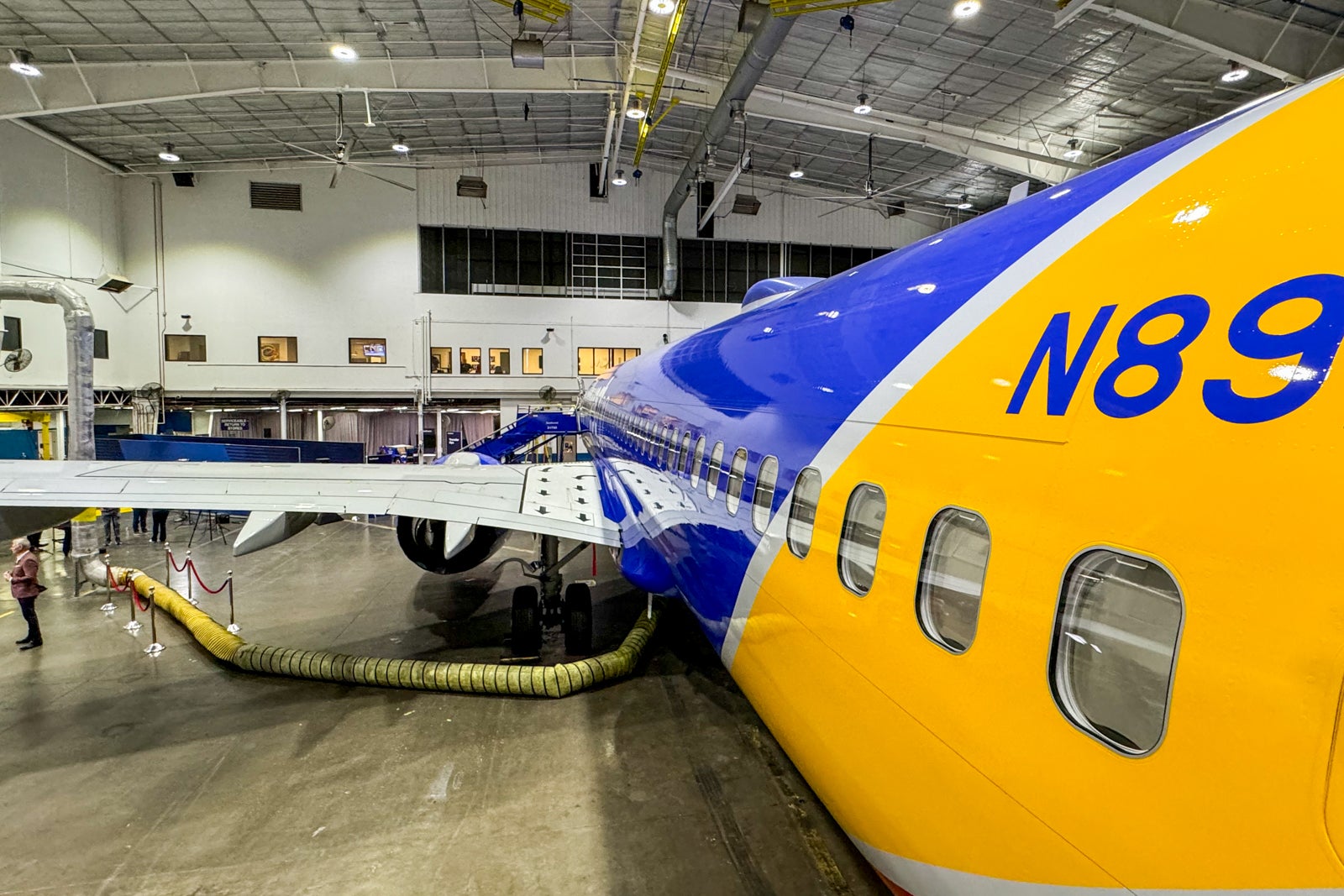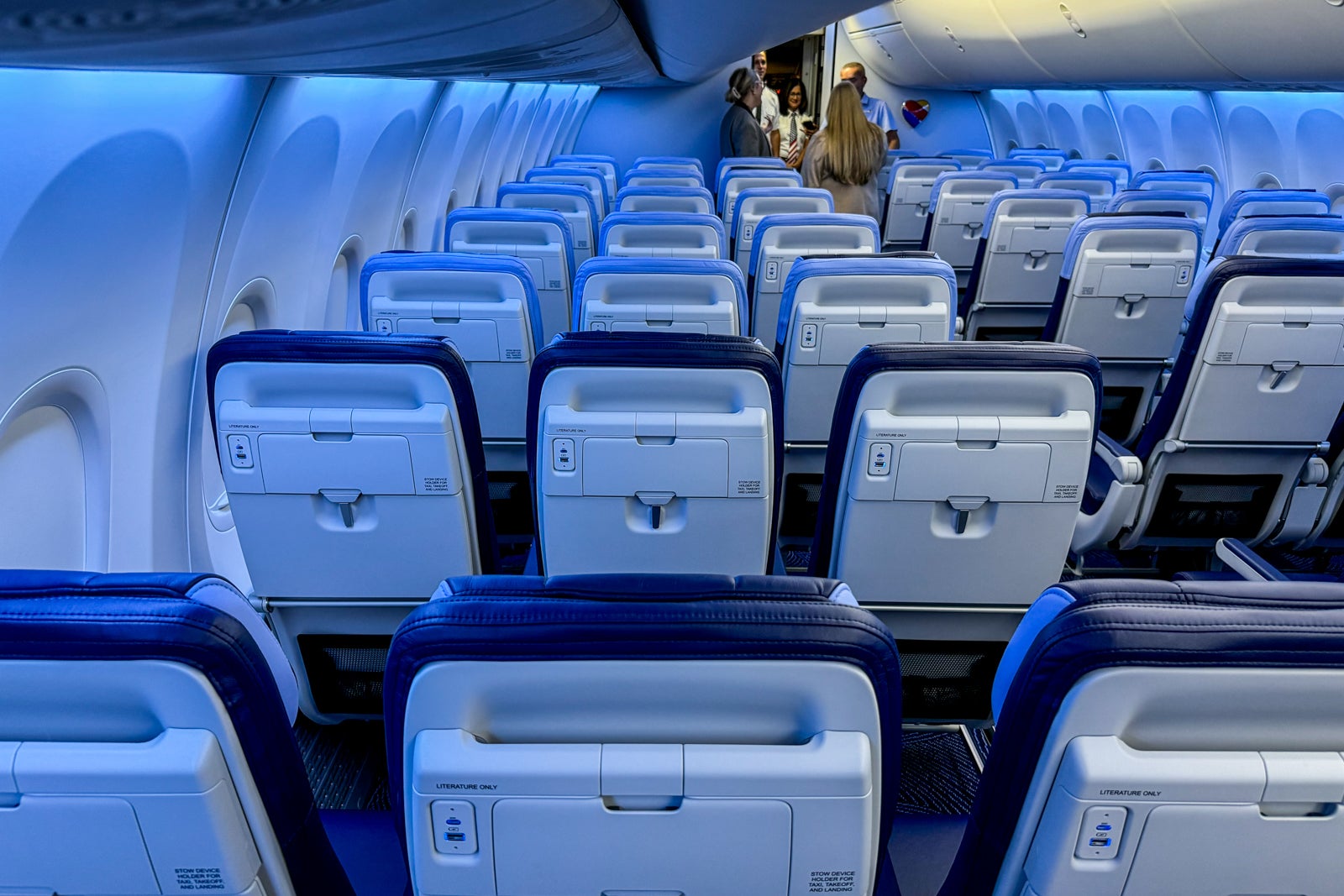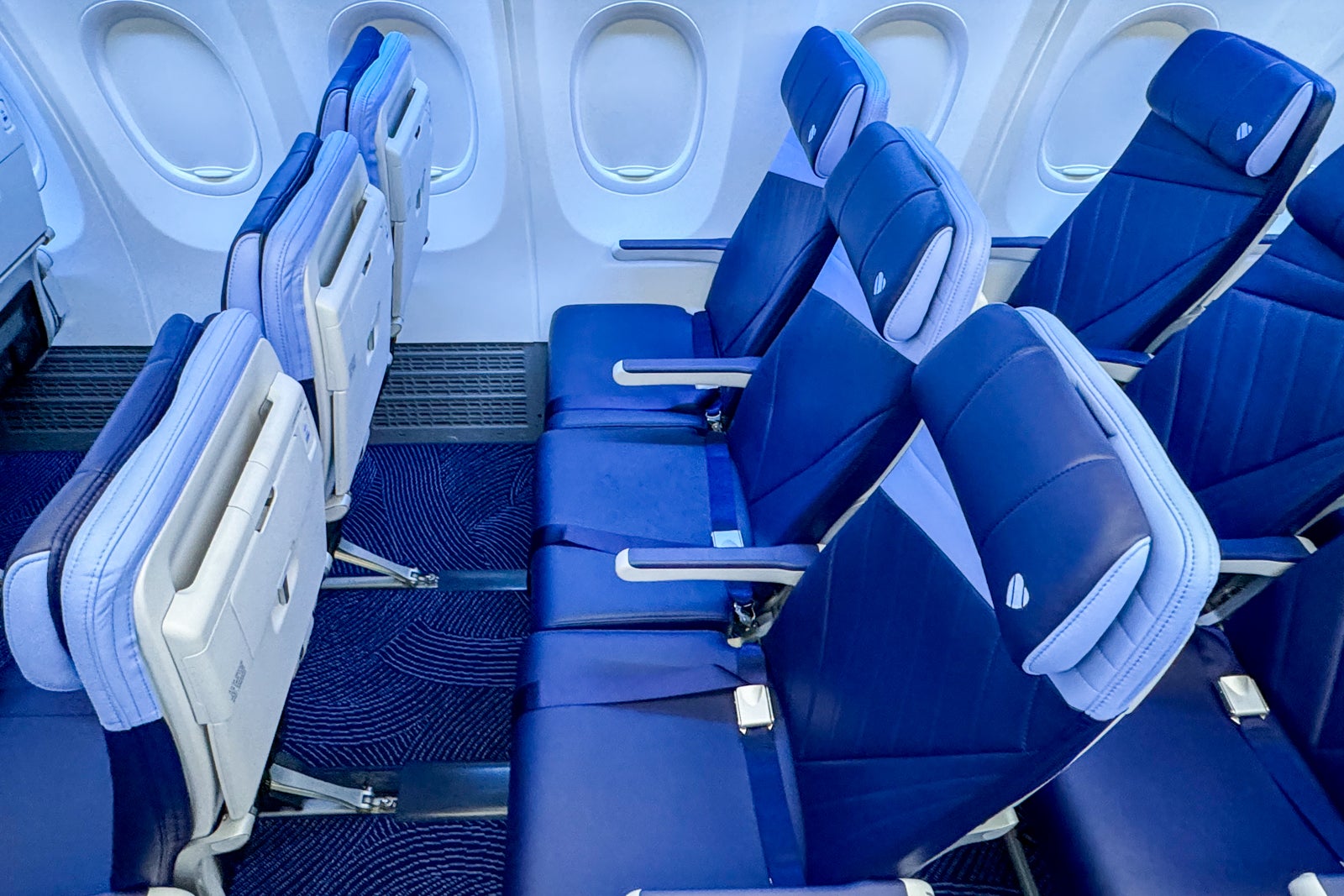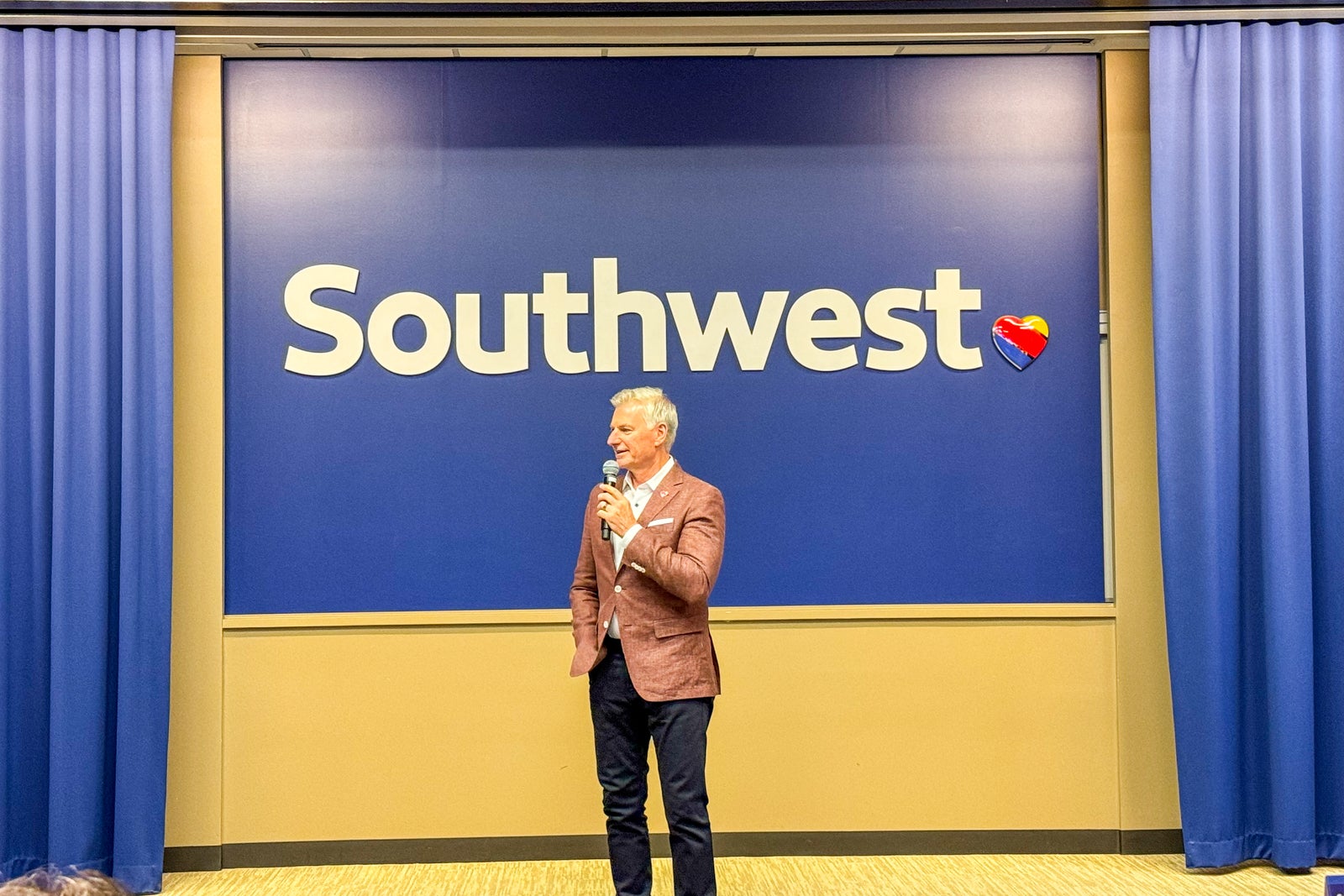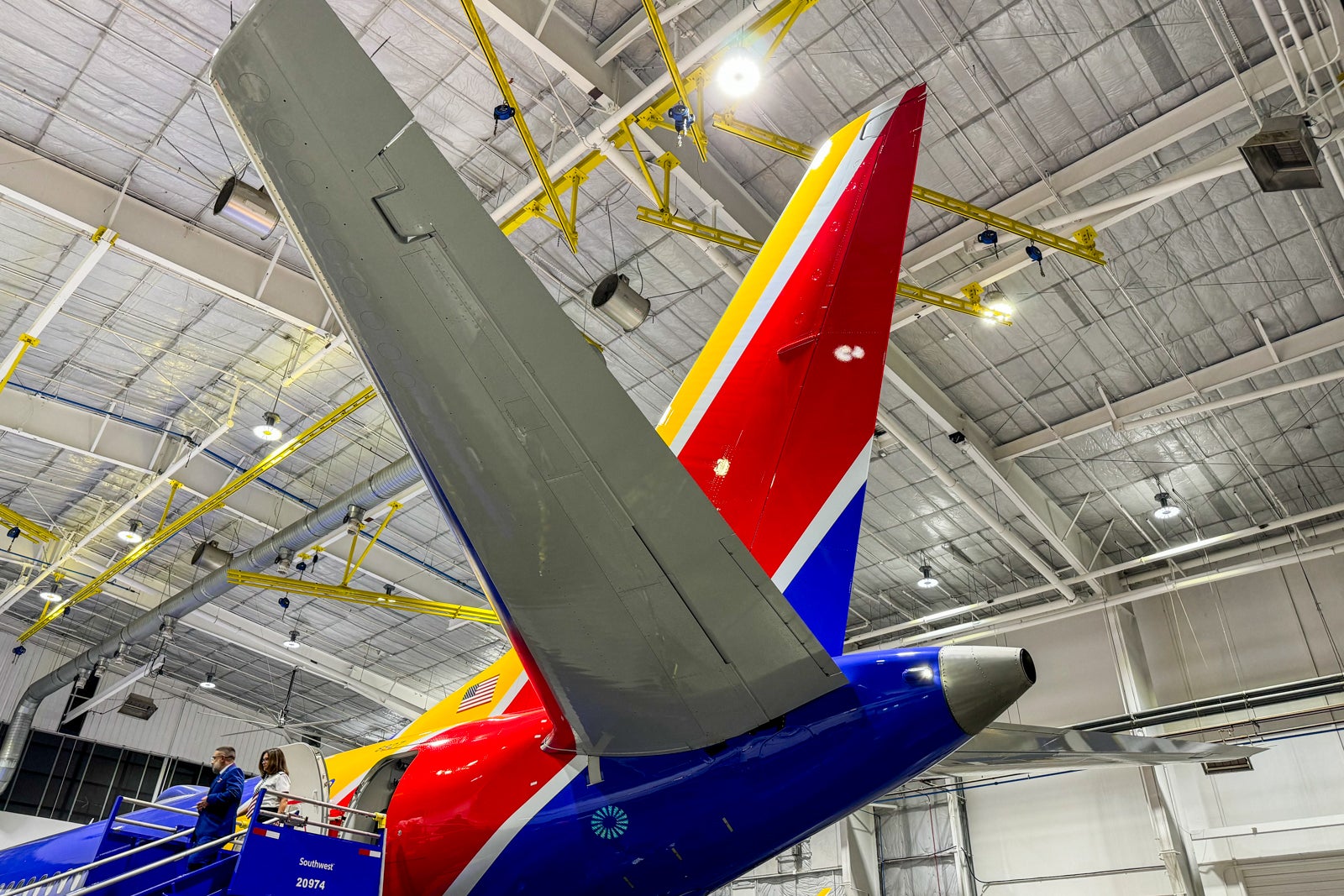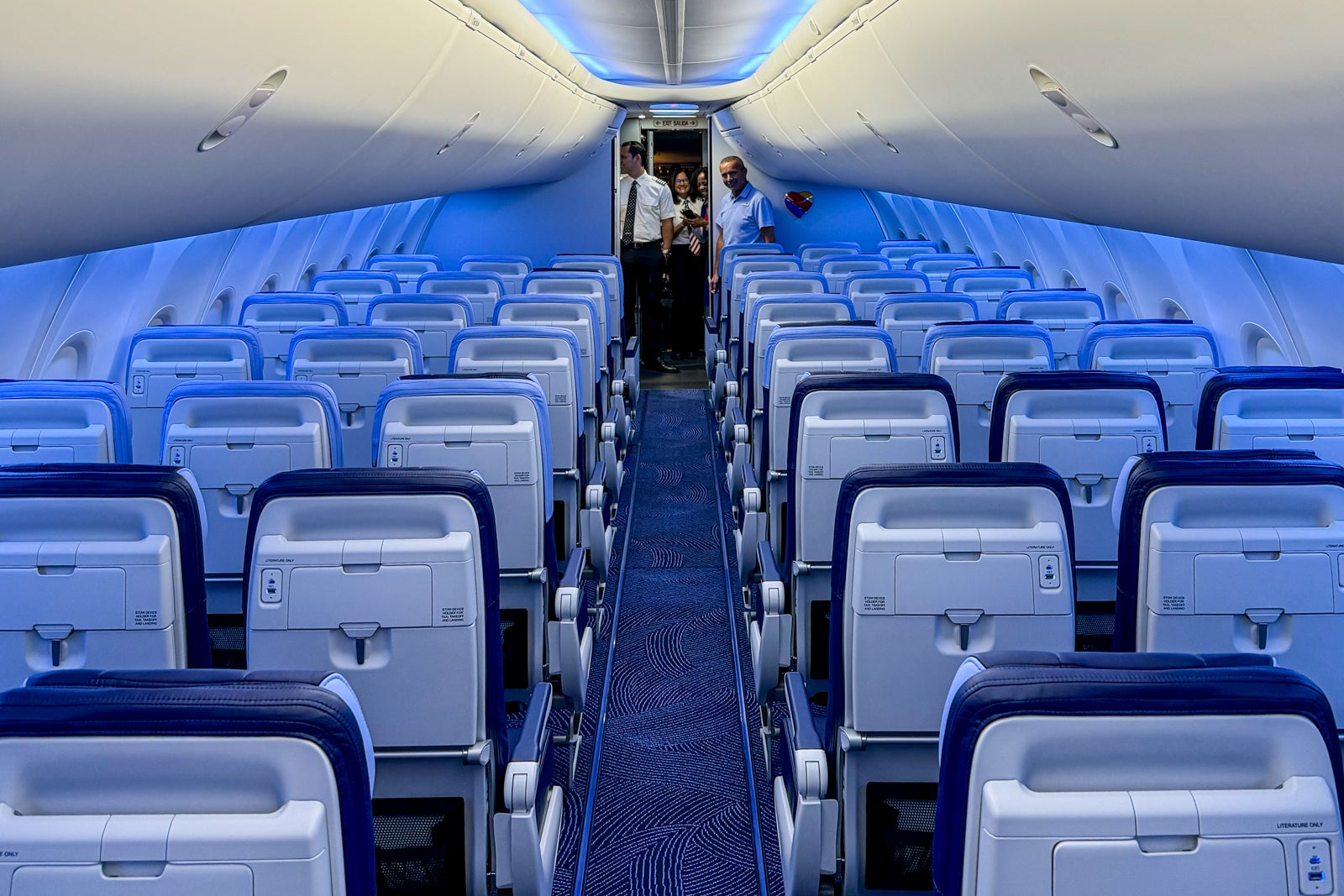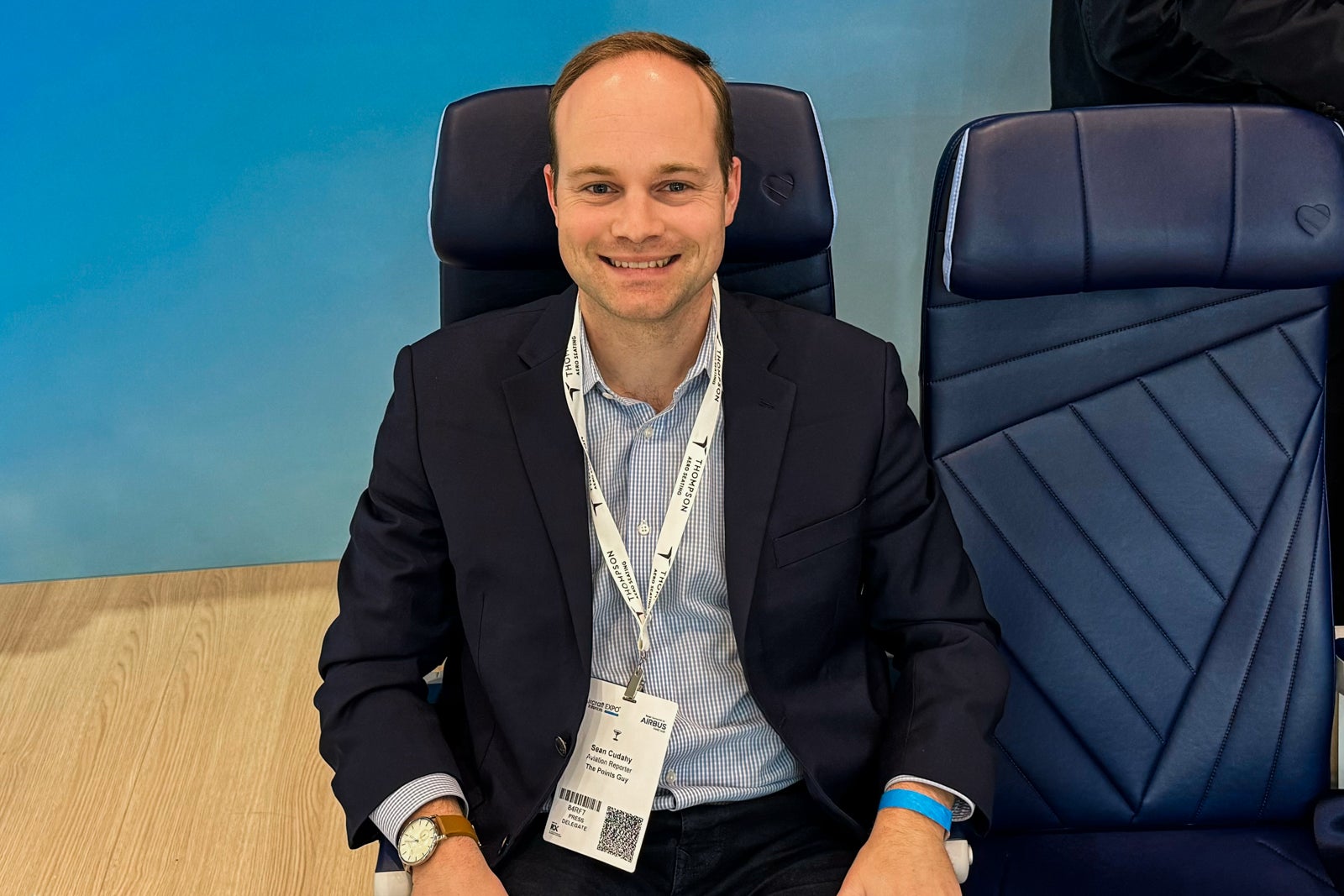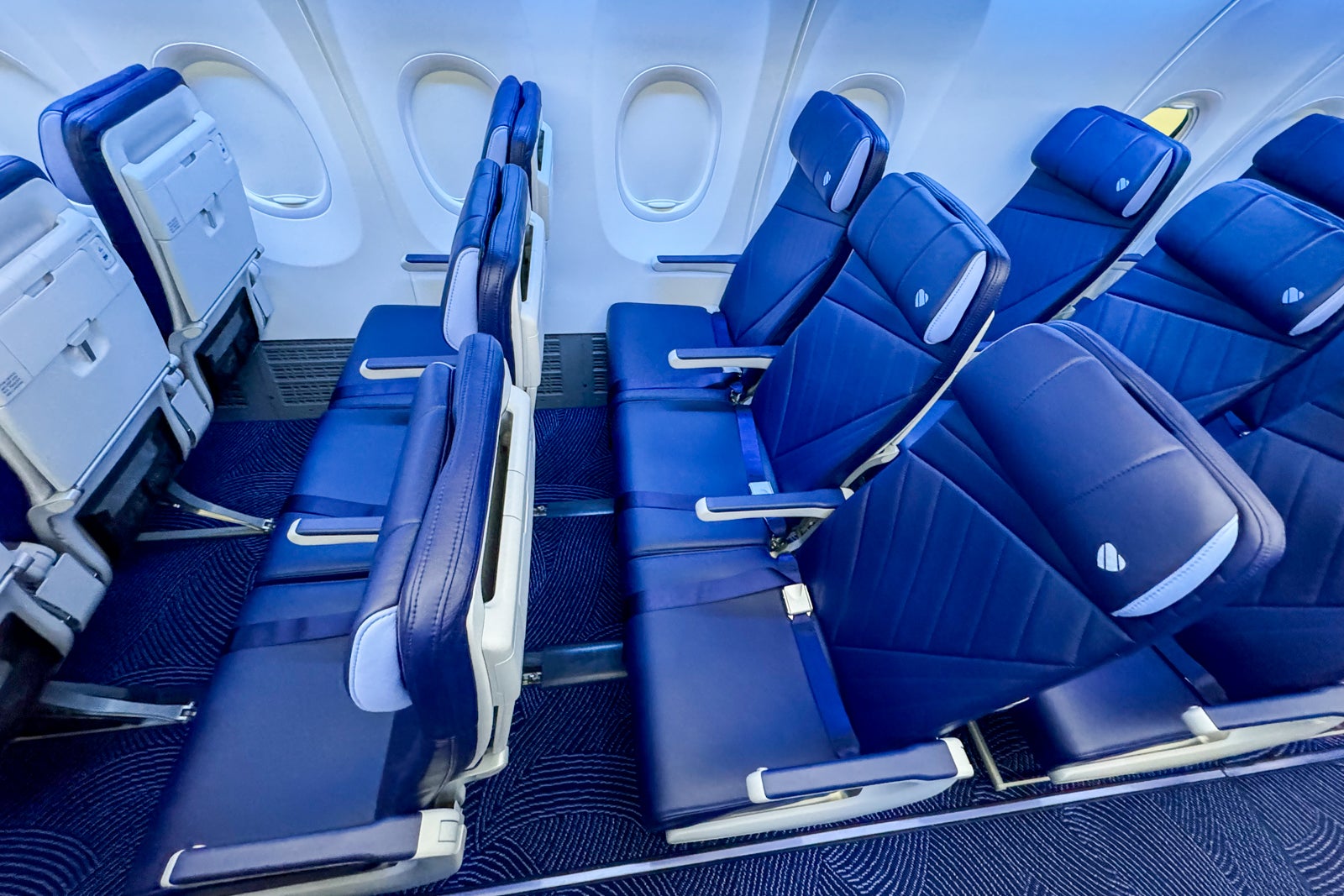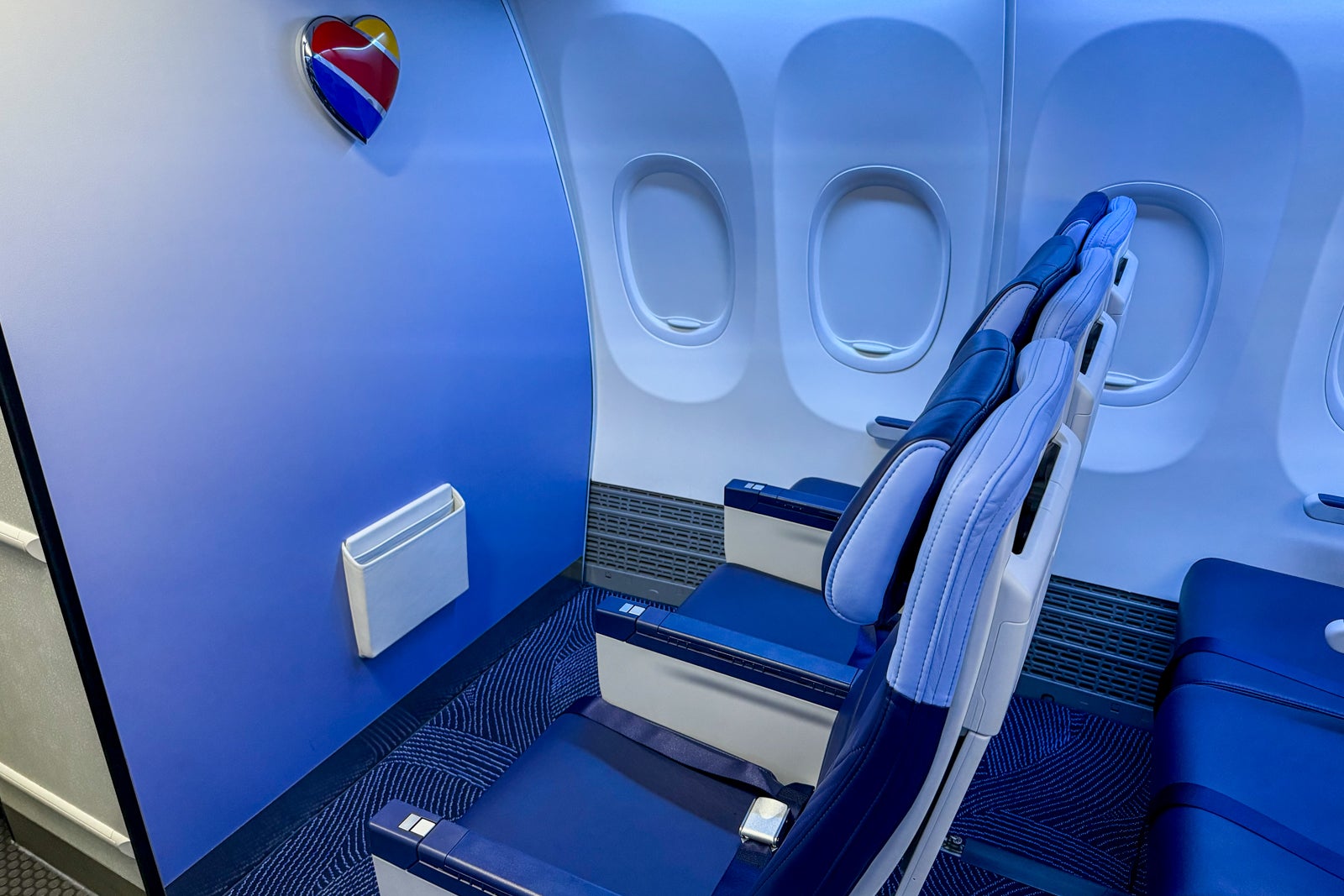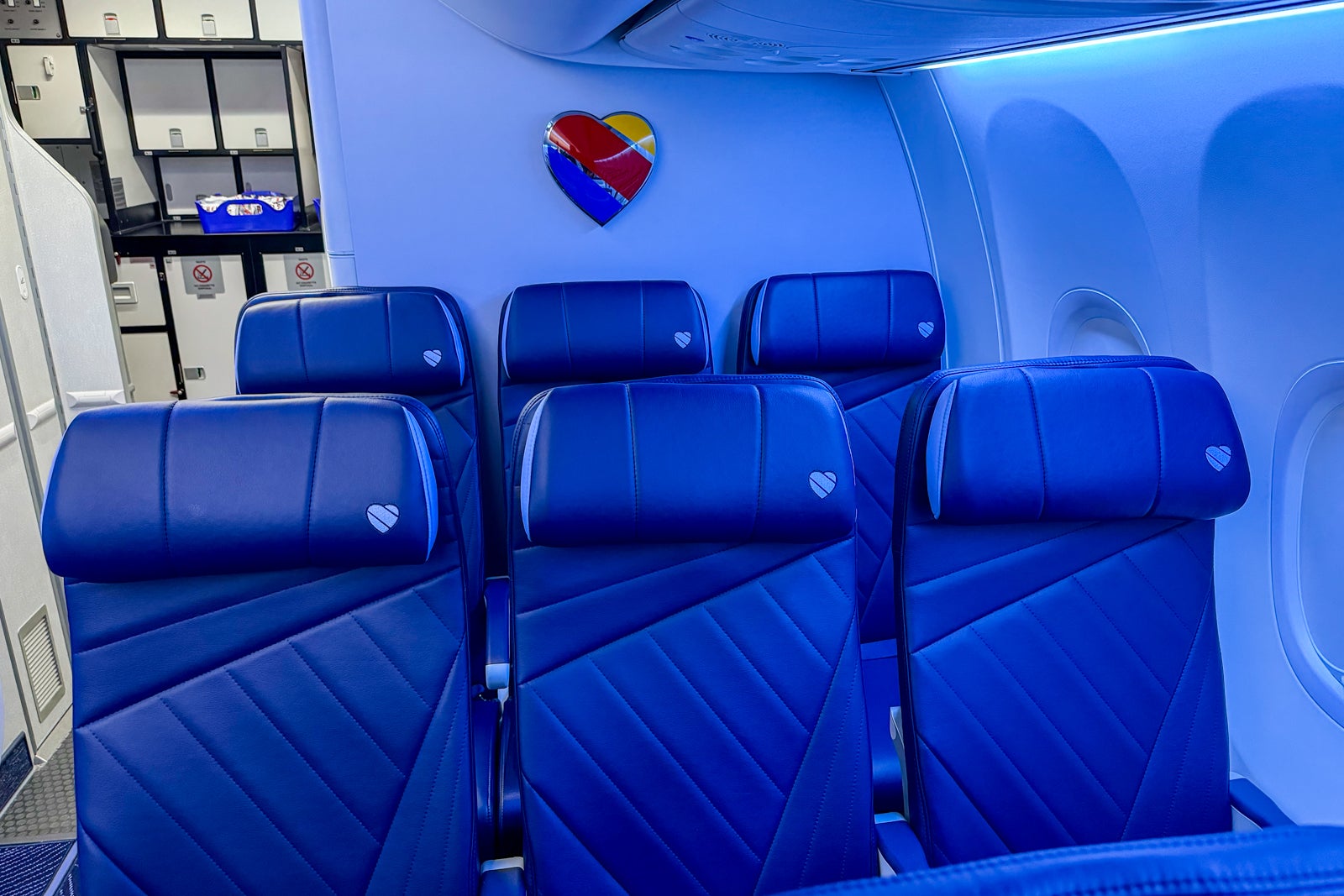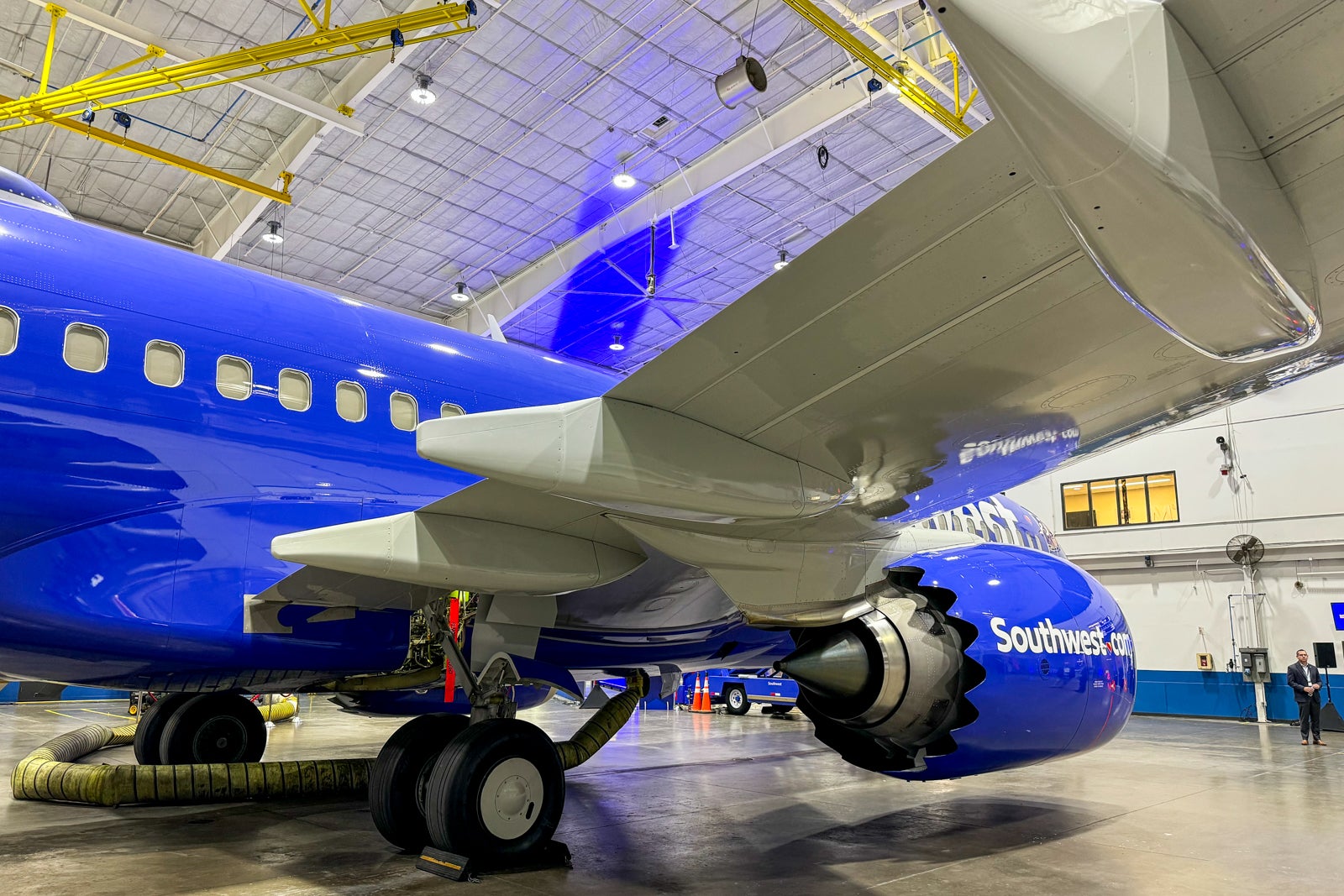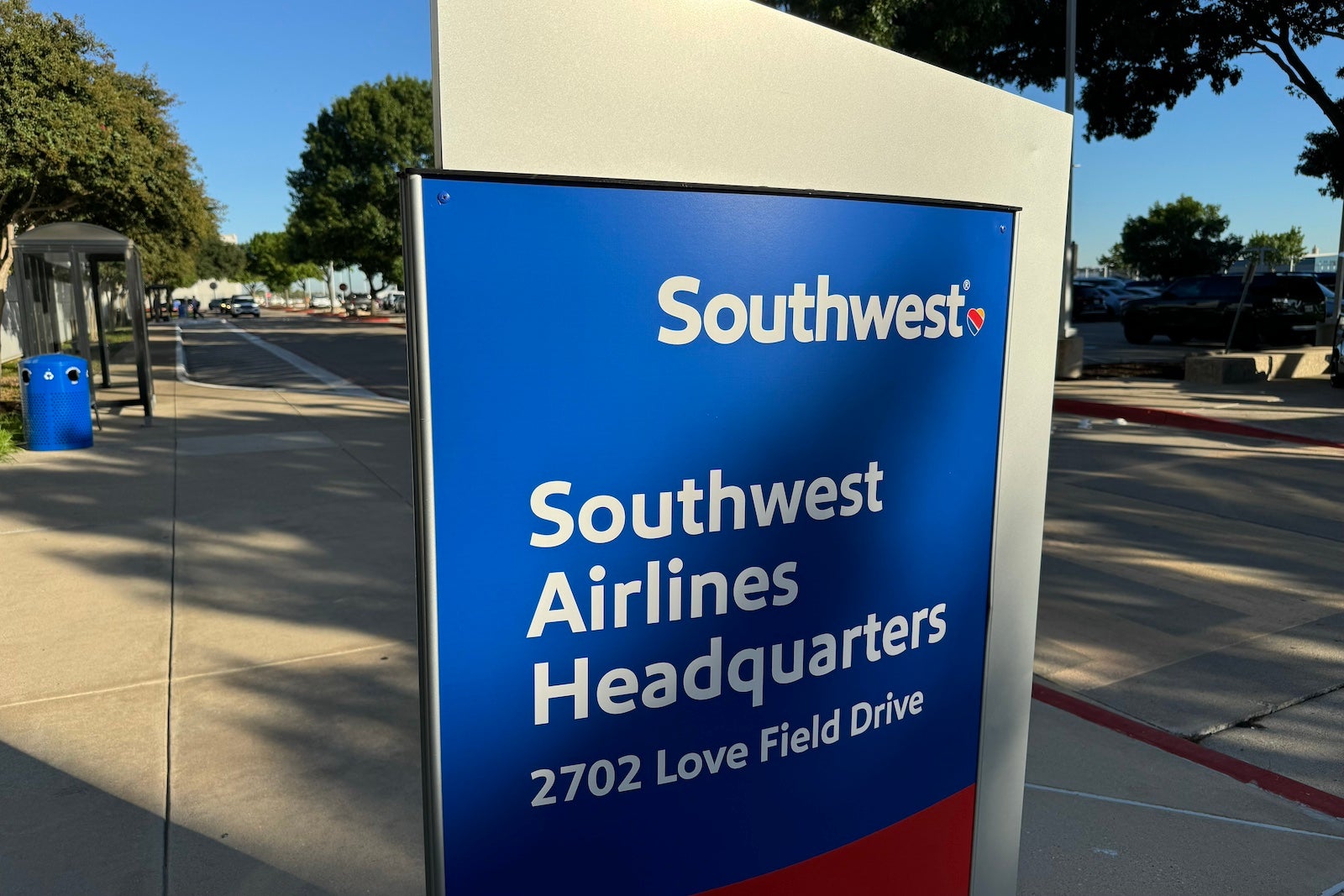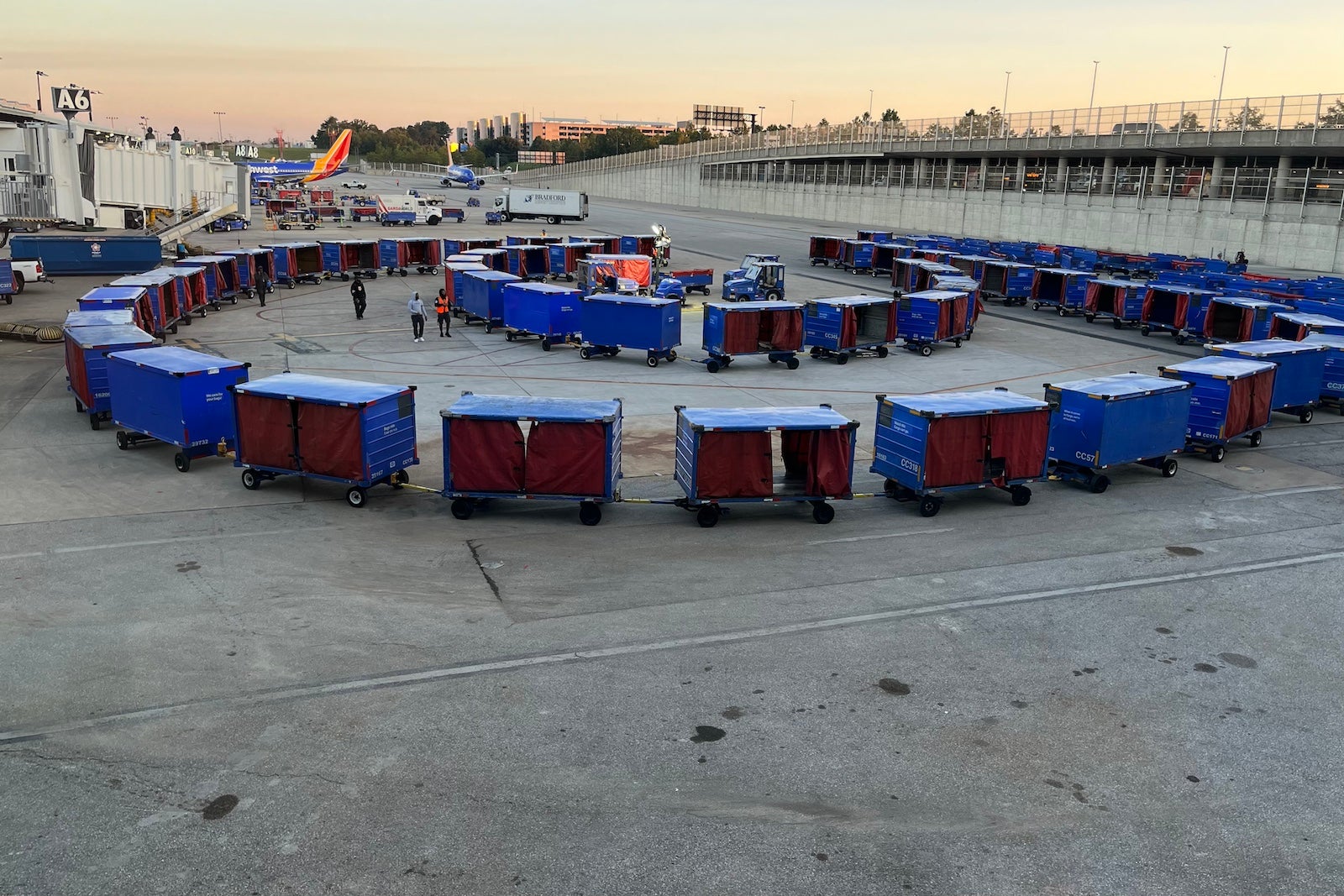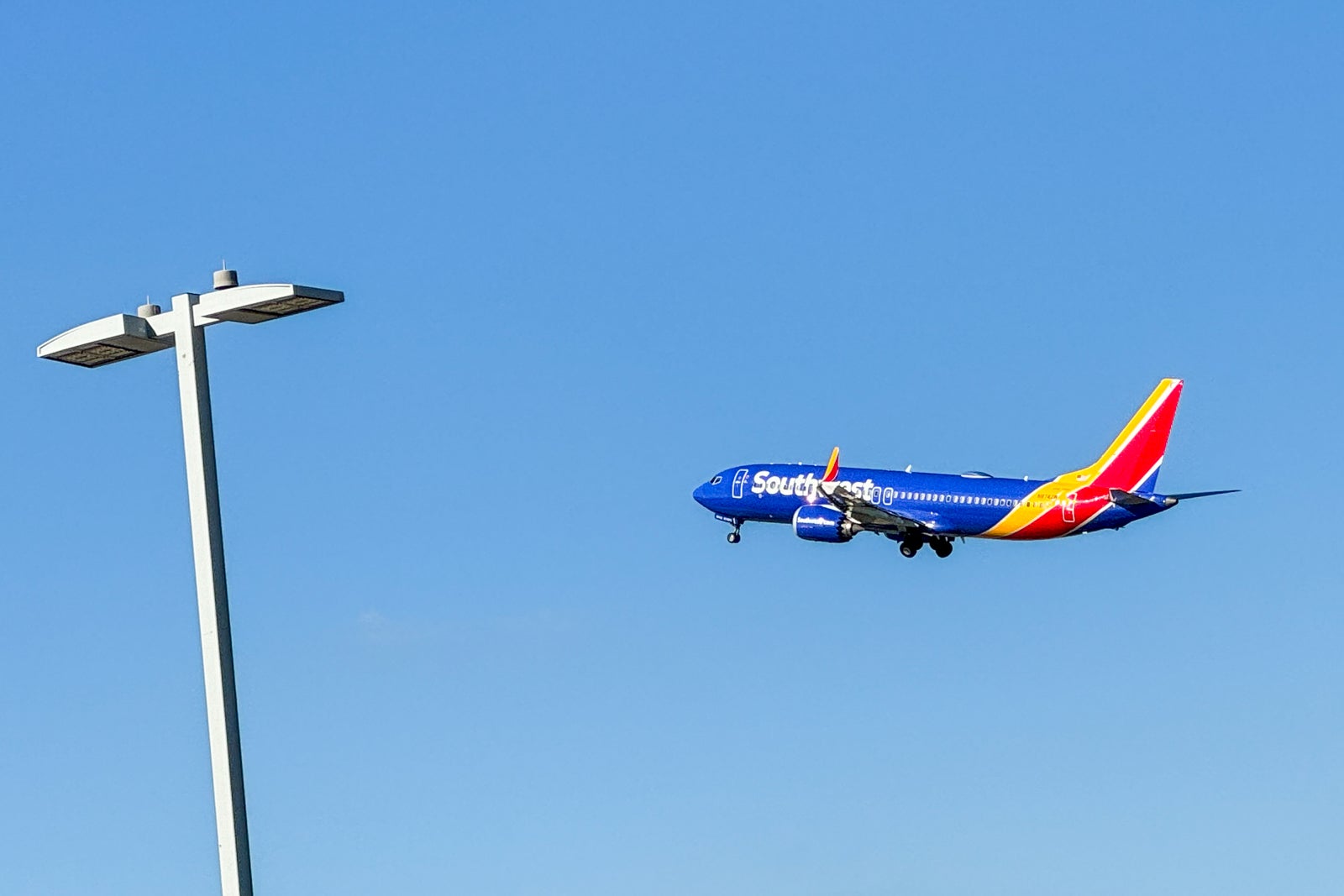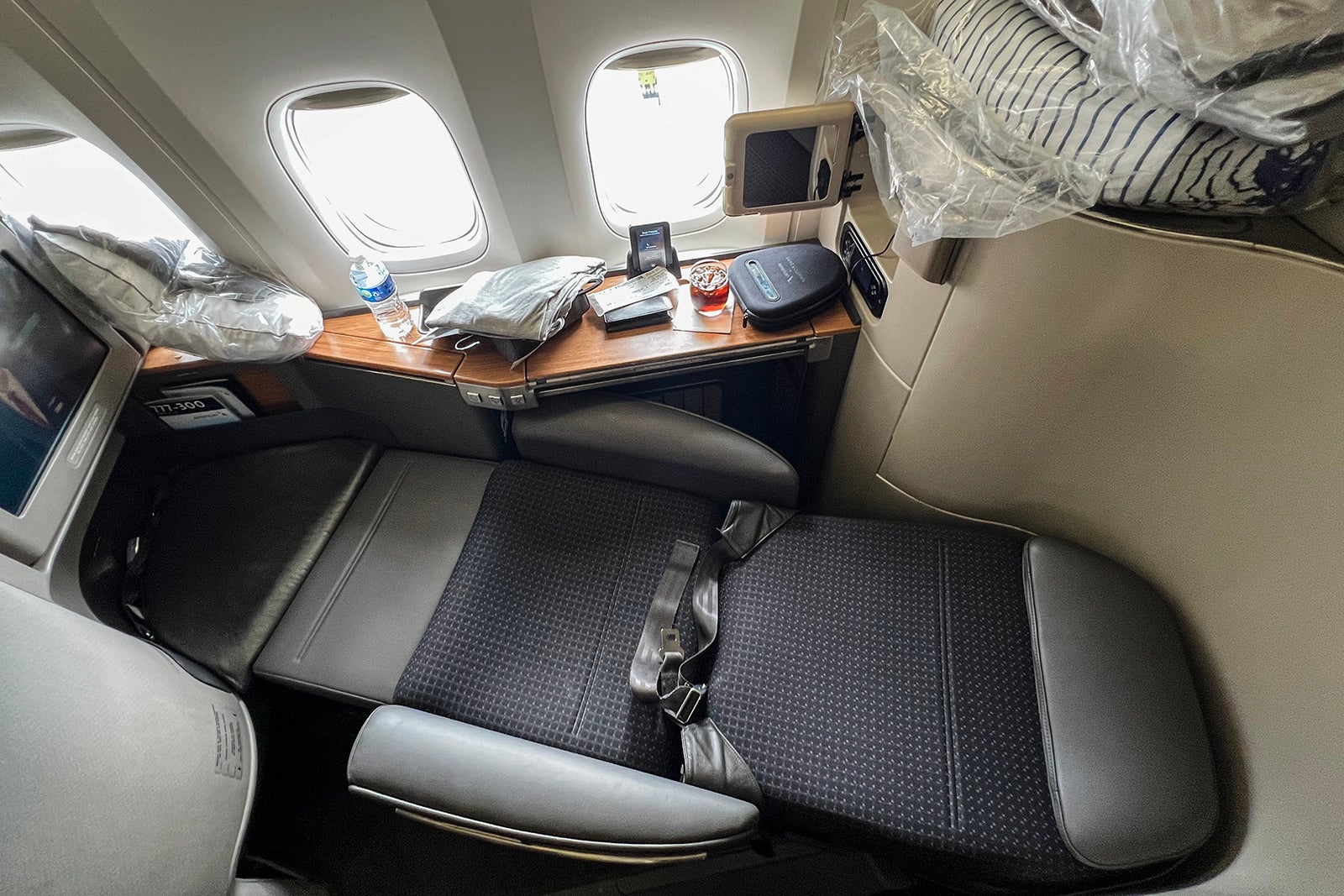Southwest Airlines reveals new boarding and seating process
For more than 50 years, open seating has been almost synonymous with Southwest Airlines, but that’s all set to change in the coming years.
Over the course of several hours Thursday, executives at the Dallas-based carrier walked investors through the finer details of top-to-bottom changes aimed at boosting the company’s financial performance.
For customers, those changes will play out, most notably, in the form of the airline’s first-ever assigned seats and extra-legroom rows.
That seismic shift from Southwest’s half-century of open seating will also force the carrier to reimagine its boarding process — although the new procedures executives laid out Thursday do maintain an aura of familiarity with the airline’s current one-of-a-kind process.
Combined with new seats the airline already planned for its fleet starting in 2025 and an overall face-lift for its cabins, it’s safe to say the next couple of years will be a time of change for Southwest flyers.
Here’s a rundown of what you’ll soon see when booking, boarding and on board the carrier’s flights — plus, what changes the airline considered but ultimately decided against.
Value check: Are airline credit cards worth it anymore?
Booking
The biggest change customers will notice when booking a flight on Southwest in the coming years is the ability to select a seat — or, if they choose, to pay more for an extra-legroom seat.
Southwest estimates these changes for flights departing during the first half of 2026 will go live in its booking channels in late 2025.

Daily Newsletter
Reward your inbox with the TPG Daily newsletter
Join over 700,000 readers for breaking news, in-depth guides and exclusive deals from TPG’s experts
Leaders said details about the exact services included in each of the carrier’s four current fare classes are still in the works, but here are a few things we do know.
No seat selection for Wanna Get Away fares
Wanna Get Away fares will not include complimentary seat selection. Passengers on this fare type who don’t pay to select a seat will be assigned one prior to departure.
While some travelers may be disappointed by this news, Southwest executives argue the fare will remain a more lenient option than the basic economy products offered by other U.S. carriers, many of which don’t allow free cancellations, checked bags or, in the case of United Airlines, full-size carry-ons.
“That’s by far the best base fare product in the industry … when it comes to two free bags, no change and cancel [fees] on the base product,” said Ryan Green, Southwest’s executive vice president. “Flight credits don’t expire, all of that remains. If you don’t value the ability to select your seat at booking … nothing changes for you.”
Wanna Get Away passengers will also still receive full Southwest Rapid Rewards elite qualifying credit, executives added.
Other fare classes
Wanna Get Away Plus (and higher) fare classes will come with complimentary seat selection, though customers can opt to purchase higher-priced seats.
Extra-legroom seats
Southwest will charge extra for its all-new extra-legroom seats. They’ll offer between 3 and 5 inches of extra space, depending on the aircraft.
A-List elite status members will be able to select these seats for free within 48 hours of departure. A-List Preferred elite members will be able to select these seats at no cost when booking a ticket.
It’s possible Southwest may also offer seat selection perks (including for its “preferred” standard economy seats situated closer to the front of the plane) to elite members and as a future credit card perk. Those decisions are still in the works, leaders said.
A new (but familiar) boarding process
Even as Southwest overhauls its seating processes, its boarding procedures will remain “very familiar,” the airline said Thursday — albeit with one big exception.
“Gone will be the days of setting an alarm clock 24 hours in advance of a flight to secure a good boarding position and a good seat,” Green quipped, alluding to the lengths Southwest flyers go to today to check in at the first possible moment in hopes of securing the best boarding position.
However, the overall boarding process of the future will be reminiscent of the carrier’s unique current procedures.
Passengers will still get a boarding number, and they’ll still line up single file next to numbered posts in the boarding area.
“Because our customers are used to lining up to board the aircraft in order, next to stanchions, we expect our future boarding process to feel very familiar and uniquely Southwest,” CEO Bob Jordan said Thursday.
The airline plans to award higher boarding positions to elite members and customers who purchase higher fare types — though in the absence of open seating, the key benefit of boarding early, going forward, will be priority access to overhead bin space.
Beyond that, the airline plans to order remaining passengers in a way that maximizes boarding efficiency.
Aircraft changes
To make these seating arrangements a reality, Southwest will have to reconfigure its fleet of around 800 aircraft. In the process, its planes are also getting an overall interior face-lift.
We got a look Thursday at the future setup of a Southwest Boeing 737 MAX 8 with the new cabin look and layout, including 68 of its 175 seats (about 39%) sporting extra legroom.
Cabin design
As soon as you walk on a freshly retrofitted Southwest aircraft, you’ll notice an updated color palate featuring a new color scheme of navy and a lighter blue.
This particular jet also features the airline’s all-new seats from seat maker Recaro, which I first saw in May at an aviation event in Hamburg, Germany.
Seats
Southwest says the seats, chosen after exhaustive customer research, offer improved lumbar support compared to its current product. The headrest offers foldout neckrests and vertical maneuverability.
Around back, the seatbacks sport USB-A and USB-C power charging ports, a personal device holder, a tray table with two cupholders, a seatback pocket and a water bottle holder.
1 of 5
SEAN CUDAHY/THE POINTS GUY
These seats are expected to start hitting the fleet in 2025.
The seats are identical, whether you’re sitting in a standard or extra-legroom row — with one cosmetic exception.
Extra-legroom seats
Even if you don’t have a tape measure, you can immediately recognize an extra legroom row on this Southwest plane by the light blue streak on the seats.
1 of 2
SEAN CUDAHY/THE POINTS GUY
Southwest’s “premium” seats will offer 34 inches of pitch on its Boeing 737 MAX 8, 737-800 and future Boeing 737 MAX 7 aircraft. (Pitch is the measurement from a fixed point on one seat to the same point on the seat in front and is a proxy measurement for legroom.)
That’s compared to 31 inches in the standard economy rows, which will be about an inch tighter than what you’ll find today, a move the airline is making to avoid losing seats as it expands the legroom in the new, premium rows. The carrier argues its pitch will still be among the best in economy in the U.S. airline industry.
On Southwest’s Boeing 737-700 jets, the extra-legroom pitch will be a more comfortable 36 inches.
On some aircraft, the extra-legroom seats will occupy about a third of the cabin — but on others, like the Boeing 737 MAX 8, it’ll actually be close to 40% of the cabin.
Here’s how an extra-legroom seat’s space on the Boeing 737 Max 8 compared to a standard seat for Ben Mutzabaugh, TPG’s managing editor of aviation.
1 of 2
SEAN CUDAHY/THE POINTS GUY
Cabin layout
Think of the cabin layout as four “zones,” said Andrew Watterson, Southwest’s chief commercial officer.
When you first board, you’ll see the extra-legroom seats up front. Then comes “preferred” seats, which are higher-priced economy seats situated closer to the front of the aircraft.
In the middle of the plane, near the exit row, there are several more rows of extra legroom.
Then, behind those, are the standard economy seats.
Retrofit plans
Southwest has ambitious retrofit plans in the works to make these changes a reality.
The carrier is currently working with the Federal Aviation Administration to get the new cabin layouts certified and expects that process to take several months.
The airline hopes to begin refitting these cabins in the first quarter of 2025, beginning with its largest Boeing 737 jets — and plans to retrofit 50 to 100 jets per month with the new seating configurations.
Then, those jets will return to service — which means you’ll start seeing Southwest jets with extra-legroom seats appearing in service well before assigned and extra-legroom seats technically go on sale.
What Southwest considered but didn’t do
These boarding and seating changes are just part of a larger commercial overhaul meant to boost Southwest’s financial performance, as the carrier has trailed its larger U.S. competitors in earnings as of late.
They came after extensive data-driven research and consideration of even more sweeping changes, according to executives.
Bag fees
Southwest leaders acknowledged they studied the possibility of dropping to only one free checked bag (instead of the two the carrier currently allows) or introducing a bagless basic economy-style fare.
Ultimately, Green said, the company concluded that chipping away at its “bags fly free” policy would have driven customers away.
“It is far and away the top feature that differentiates Southwest from our competitors,” he said. “And it is one of the top criteria in why customers choose Southwest Airlines.”
First class? Not a fit
Southwest even studied the possibility of a more premium cabin on its planes before deciding to simply proceed with the simpler extra-legroom concept.
“We looked at everything and we tested everything, including a full first class, the European first class with the blocked middle seat, and from both a revenue potential and a customer desire,” Jordan said. “What we’re doing is what proved out to be best for both.”
Related reading:



